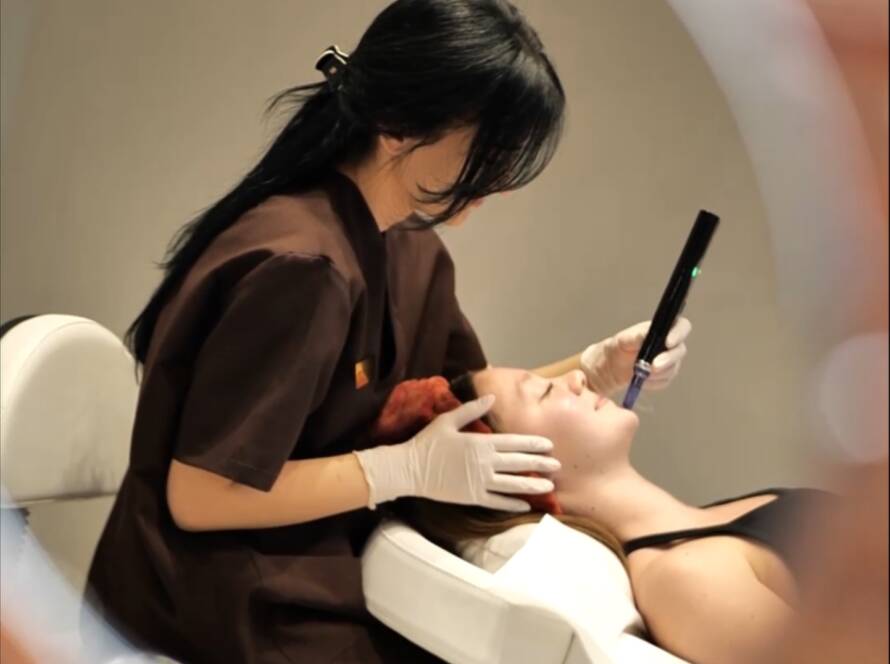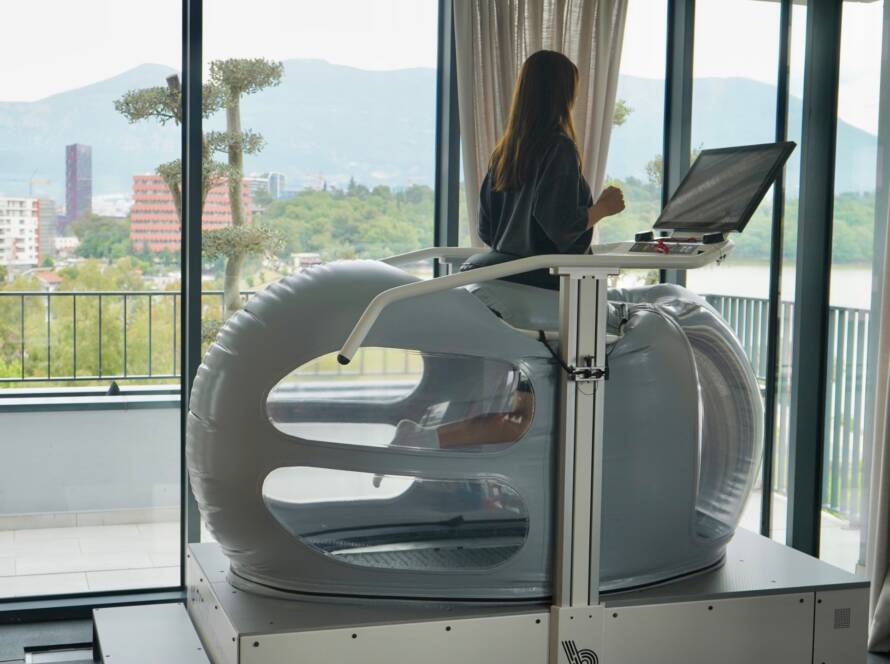Physiotherapy rehabilitation is a transformative process that aims to restore mobility, strength and quality of life through specialized and personalized interventions. Through modern techniques, such as therapeutic exercises, massages and innovative technologies, physiotherapy helps individuals recover from injuries, manage chronic pain and improve daily functionality. Whether after surgery, a sports injury or to address long-term conditions, physiotherapy rehabilitation offers a path to health and well-being, focusing on strengthening the body and mind.
Rheumatological rehabilitation
Rheumatological rehabilitation in physiotherapy is a specialized process of treating and managing rheumatological diseases that affect the musculoskeletal system, such as:
- Rheumatoid arthritis
- Osteoarthritis
- Systemic lupus erythematosus
- Ankylosing spondylitis
- Fibromyalgia
- Herniated disc
- Cervico-dorsalgia
- Back pain
- Radiculopathy
The purpose of rheumatological rehabilitation:
- Pain relief
- Increased mobility and flexibility
- Improving daily function
- Prevention of deformities and deterioration
- Improving the quality of life
Orthopedic/traumatological rehabilitation
Orthopedic/traumatological rehabilitation in physiotherapy is a process of treatment and recovery after injuries or surgical interventions that affect the musculoskeletal system – that is, bones, joints, muscles, ligaments, and tendons.
✅ The main goal of orthopedic/traumatological rehabilitation:
- Restoring normal function of the damaged part
- Pain relief
- Improving strength and flexibility
- Preventing complications and further damage
- Return to daily or sports activities
🦴 When is orthopedic/traumatological rehabilitation used?
- After fractures
- After surgical interventions (such as knee or hip replacements, shoulder surgeries, etc.)
- Ligament injuries (e.g. ACL)
- Luxations and subluxations
- Tendinitis and bursitis
- Muscular injuries
- Scoliosis or other spinal deformities
- Compression syndromes (such as carpal tunnel syndrome)
Postural reeducation
Postural reeducation in physiotherapy is a therapeutic method that aims to correct incorrect body posture , eliminate muscle and joint pain associated with mispositioning, and prevent further injury .
Wrong posture can be created by factors such as:
- Sedentary life/long sitting
- Excess weight
- Stress
- Spinal injuries or pathologies (scoliosis, hyperlordosis, kyphosis)
- Bad habits during work or physical activity
✅ Goals of postural reeducation:
- Improving body posture at rest and during movement
- Relieving muscle tension and chronic pain
- Increased body awareness and movement control
- Increased flexibility and muscle balance
- Prevention of spinal deterioration
Pediatric rehabilitation
Pediatric rehabilitation in physiotherapy is a specialized field that focuses on treating, assisting, and improving the motor, functional, and physical development of children who have congenital, acquired, or developmental disorders.
It aims to help children reach their maximum physical potential , integrate as actively as possible into everyday life, and improve their quality of life .
👶 Who is pediatric rehabilitation aimed at?
- Children with cerebral palsy (CP)
- Delay in motor development (delay in sitting, walking, standing, etc.)
- Muscular dystrophy
- Neuromuscular diseases (e.g. Spinal Muscular Atrophy – SMA)
- Spina bifida
- Congenital muscular torticollis
- Scoliosis and other postural deformities
- After trauma, fractures, or surgical interventions
- Balance and coordination disorders
- Genetic disorders that affect the muscles or nervous system
✅ Goals of pediatric physiotherapy:
- Improve muscle tone, strength and endurance
- To stimulate motor development according to age
- Assist in walking and functional movements
- Improve coordination, balance and posture
- Prevent contractures or orthopedic deformities
- To increase the child’s autonomy in daily activities
- To prepare the child for better integration into school and society
Neurological rehabilitation
Neurological rehabilitation in physiotherapy is a specialized field that deals with the treatment of patients who have injuries or disorders of the nervous system – such as the brain, spinal cord, or peripheral nerves – that affect movement, balance, coordination, and daily functions.
✅ Goals of neurological rehabilitation:
- Restoring lost or damaged function
- Improving motor control, balance and movement
- Relieving spasticity or muscle stiffness
- Prevention of contractures and deformities
- Promoting independence in activities of daily living
- Improving the quality of life
🧠 When is neurological rehabilitation used?
For patients with:
- Stroke
- Multiple sclerosis (MS)
- Cerebral palsy
- Parkinson’s disease
- Craniocerebral trauma
- Spinal cord injuries (tetraplegia/paraplegia)
- Neuromuscular diseases (e.g. ALS, muscular dystrophy)
- Ataxia, balance disorders
- Peripheral neuropathy, as a result of diabetes or trauma
Geriatric rehabilitation
Geriatric rehabilitation in physiotherapy is a specialized field that focuses on treating and improving the physical functions of older adults – usually people over 65 years of age – to maintain independence, reduce the risk of falls , and improve their quality of life .
✅ Goals of geriatric rehabilitation:
- Restoration or preservation of motor functions
- Relieving pain associated with chronic diseases (such as osteoarthritis, osteoporosis)
- Improving balance and coordination to prevent falls
- Increased independence in daily activities
- Improving cardiopulmonary and muscular functions
- Preventing immobility and social isolation
👵 Who is geriatric rehabilitation aimed at?
Elderly patients facing:
- General physical and muscular weakness (sarcopenia)
- Balance problems and frequent falls
- Degenerative diseases such as arthrosis, arthritis, osteoporosis
- After a fracture or orthopedic surgery (e.g. hip/knee replacement)
- After stroke or neurological diseases (Parkinson’s, dementia)
- Cardiac or chronic pulmonary disease (COPD)
- Diseases of the peripheral nervous system
Pre-postpartum rehabilitation
Pre and post partum rehabilitation in physiotherapy is a specialized field that deals with the treatment and preparation of a woman’s body before and after childbirth , with the aim of alleviating the physical symptoms of pregnancy , preventing complications , and restoring bodily function after childbirth .
🤰 Prepartum rehabilitation (during pregnancy)
Goals:
- Relieving common pains during pregnancy (back, waist, hips, legs)
- Improving posture and body balance
- Strengthening the muscles that assist in childbirth
- Preparing for birth – physically and emotionally
Includes:
- Exercises to strengthen the pelvic floor and core muscles
- Breathing and relaxation exercises – very useful during childbirth
- Posture correction and back exercises
- Gentle exercises for flexibility and good blood circulation
- Treating pain with methods that are safe for mother and baby – massage, stretching, gentle electrotherapy (when possible)
- Ergonomic tips – how to sit, stand, and lift without causing stress on the spine
🤱 Postpartum rehabilitation (after birth)
Goals:
- Physical recovery after natural or cesarean birth
- Restoring abdominal and pelvic muscle tone
- Help in case of diastasis recti (separation of the abdominal muscles)
- Preventing or treating urinary incontinence
- Reducing pain in the back, neck or pelvis
- Restoring hormonal and physical balance
- Emotional and physical support for the mother
Includes:
- Pelvic floor muscle exercises (Kegel)
– for strengthening and better bladder control - Exercises for the abdomen and deep stabilizing muscles (core training)
- Posture, strengthening and stretching exercises
– to correct incorrect positions created by holding the baby - Pain treatment – through therapeutic massage, manual therapy, electrotherapy
- Tips for lifting and holding your baby safely
- Treatment of rectal diastasis – through specific physiotherapeutic techniques
- Breathing and relaxation work – helps with hormonal and emotional recovery



